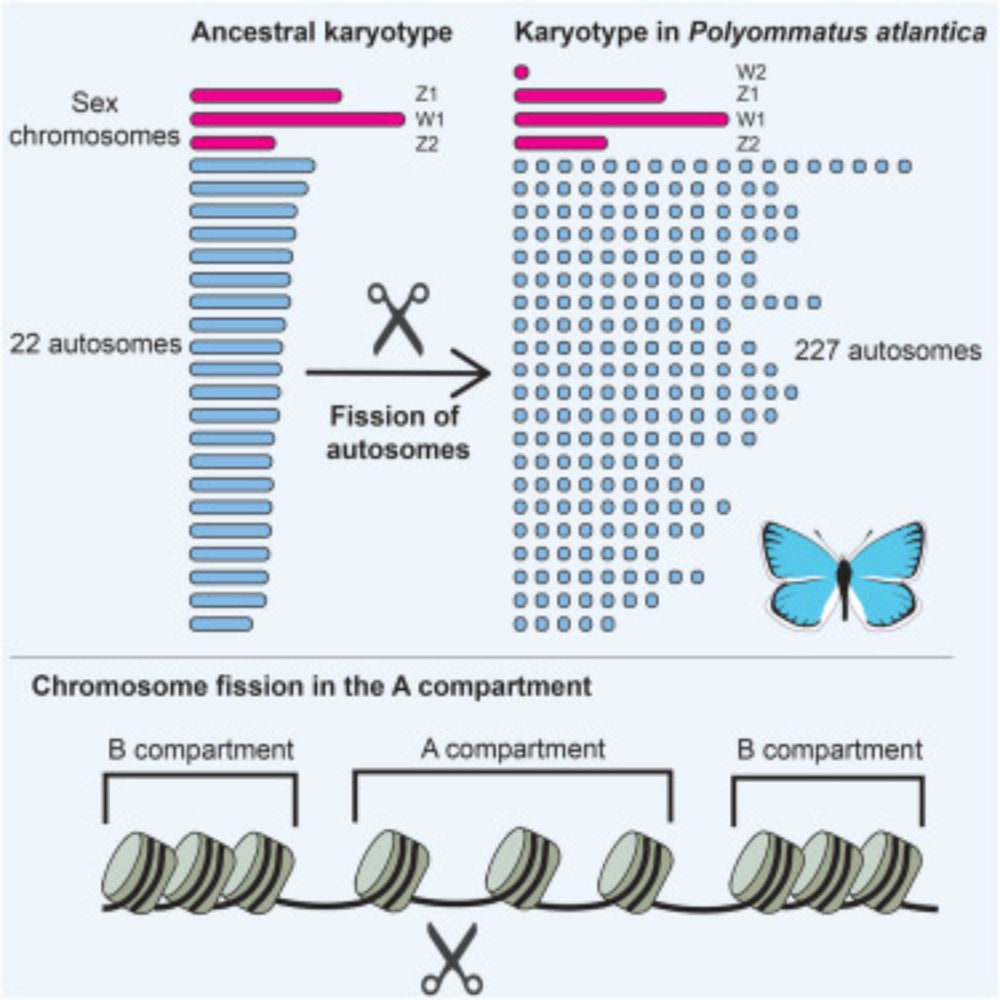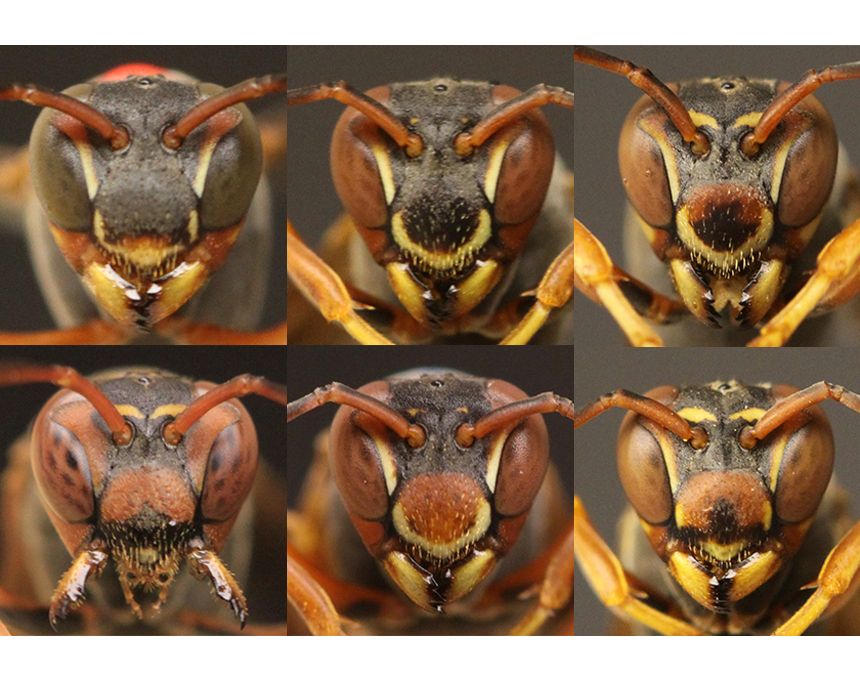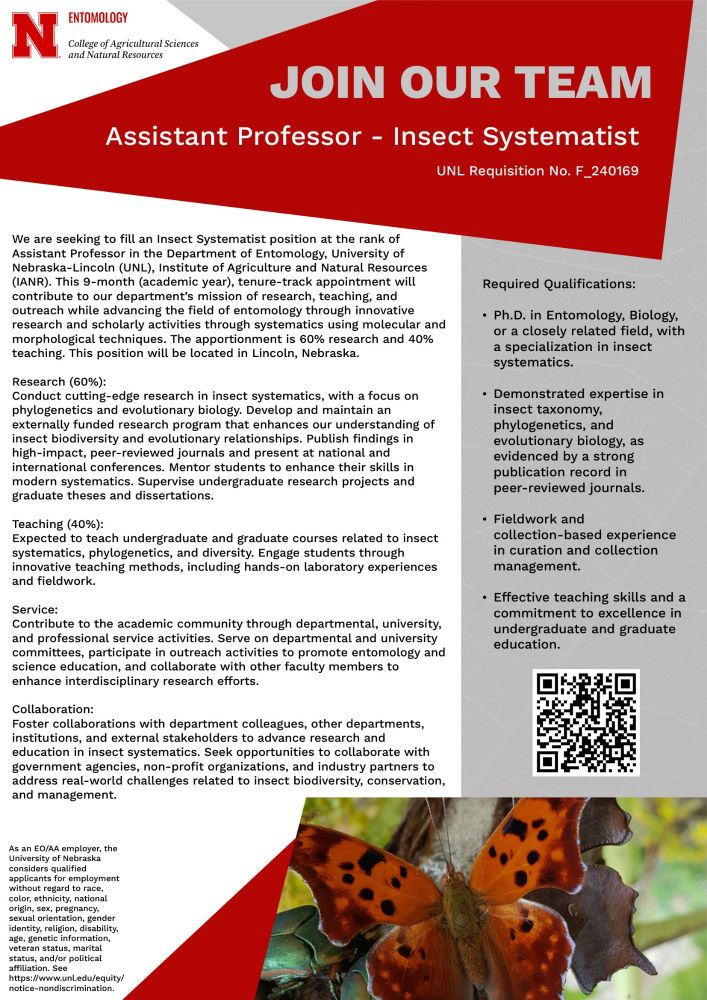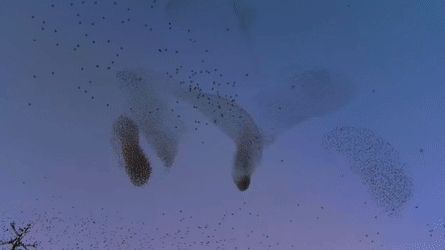We have a new postdoc position available in the Promislow lab at the HNRCA at #Tufts in #Boston, to work on the #systemsbiology of #aging in #Drosophila. Come join us! For info on the position and to apply, see promislowlab.org/wp-content/u...
25.11.2025 02:12 — 👍 9 🔁 16 💬 1 📌 0

Net-casting spider stretching it net

enlarged forward facing eyes of Asianopis subrufa
🚨Good news, everyone!
1) I'm thrilled to be joining the behavior powerhouse that is Indiana University!! So stoked, starting Jan 2026.
2) I'm recruiting grad students! Are you (or your trainee) interested in sensory ecology? behavior? evolution? fieldwork? spiders? Drop me a line Jstafstr(at)iu.edu
22.11.2025 16:53 — 👍 86 🔁 43 💬 12 📌 4

Age, caste, and social context shape ovarian morphology and transcriptomic profiles in red harvester ants
npj Aging - Age, caste, and social context shape ovarian morphology and transcriptomic profiles in red harvester ants
Thrilled to share the first full paper from @AntLabUNAM! 🐜💥
Our paper examines how queen and worker harvester ants differ in ovarian morphology and gene expression, shedding light on the ovary as a hub for multiple physiological systems, not just reproduction. Check it out! rdcu.be/ePNP8
20.11.2025 15:29 — 👍 23 🔁 10 💬 2 📌 2
🚨New paper! 🚨
@jasminealqassar.bsky.social led this work on the silk glands of the pantry moth.
These two long tubes inside the caterpillar continuously make a ton of silk
How does this special organ work?
www.cell.com/iscience/ful...
@cp-iscience.bsky.social
🧵THREAD🧵
16.11.2025 02:06 — 👍 52 🔁 26 💬 1 📌 1
My lab at Indiana University is searching for a *postdoc* and *technician* to contribute to our work studying the evolution of social behavior using fruit flies as a model system. Details below, feel free to email me with any questions! More info on our research: saltzlab.com
05.11.2025 16:56 — 👍 50 🔁 79 💬 3 📌 2
🚨 Deadline to submit an abstract for our IUSSI winter meeting in beautiful Leuven, 18-19 December has been extended to 31st October 2025
🚨 Please register at: www.iussi-nweurope.org/meetings
Come and join us - will be great fun & great lineup of speakers! Plenaries by Ido Pen & @rmash.bsky.social
16.10.2025 13:43 — 👍 5 🔁 6 💬 0 📌 1

Cross-species cloning in ants 🐜
These two males belong to different species—but share the same mother. How? Why?
To celebrate the print release of our last paper in this week’s @nature.com (issue 8084), here’s a thread summarizing the results. Why? Let’s dive in🧵👇 www.nature.com/articles/s41...
14.10.2025 12:00 — 👍 24 🔁 14 💬 1 📌 0

Kavli and NSF Announce New Grant Awards to Advance Neurobiology in…
An initiative to explore how nervous systems function and evolve in dynamic natural environments
A POSTDOCTORAL POSITION ON THE NEUROBIOLOGY OF REPRODUCTION IN A CHANGING ENVIRONMENT: We are recruiting a postdoctoral fellow to work on a Neurobiology in Changing Ecosystems (NiCE) award from NSF and the Kavli Foundation (www.kavlifoundation.org/news/kavli-a...).
19.09.2025 00:09 — 👍 3 🔁 5 💬 1 📌 0
Apply - Interfolio
{{$ctrl.$state.data.pageTitle}} - Apply - Interfolio
The Dept. of BioSciences at #RiceUniversity, in Houston, Texas, invites applications for a tenure-track assistant professor position in Evolutionary Biology, with a preferred focus on organismal responses to environmental change. Please RT!
Apply: apply.interfolio.com/173889
12.09.2025 18:45 — 👍 58 🔁 88 💬 0 📌 2

Constraints on chromosome evolution revealed by the 229 chromosome pairs of the Atlas blue butterfly
The genome of the Atlas blue butterfly contains ten times more chromosomes than most
butterflies, and more than any other known diploid animal. Wright et al. show that
this extraordinary karyotype is ...
How many chromosomes can an animal have?
In our paper out now in @currentbiology.bsky.social we show that the Atlas blue butterfly has 229 chromosome pairs- the highest in diploid Metazoa! These arose by rapid autosome fragmentation while sex chromosomes stayed intact.
www.cell.com/current-biol...
11.09.2025 15:21 — 👍 212 🔁 99 💬 4 📌 6

I am recruiting PhD students to join my lab at Wake Forest University Fall 2026. Current projects focus on the neurobiology, behavior, and development of identity processing in paper wasps. Contact me if interested. Deadline to apply is Dec. 15th 2025. Please share!
#PhDposition #PhD #wasplove
25.08.2025 17:36 — 👍 27 🔁 19 💬 1 📌 1

Curatorial Associate - New York, NY 10024 - Indeed.com
American Museum of Natural History
The American Museum of Natural History's Invertebrate Zoology Division is seeking a full-time Curatorial Associate to manage the day-to-day care, organization and accessibility of the Invertebrate Zoology collections.
www.indeed.com/viewjob?jk=d...
04.09.2025 11:58 — 👍 2 🔁 8 💬 0 📌 1
I am very thankful for the support from the Department of Biological Sciences and Dartmouth @dartmouthartsci.bsky.social for supporting my interdisciplinary research vision! We are recruiting Post Docs and Grad Students to join this exciting endeavor!
03.09.2025 00:18 — 👍 2 🔁 4 💬 0 📌 0
Apply - Interfolio
{{$ctrl.$state.data.pageTitle}} - Apply - Interfolio
Know an Evolutionary Genomicist looking for a faculty position? Join us in EEB @utknoxville.bsky.social Position is open for studying any organism, but personally I have some botany bias. 🌱 Apply before Sept 19 for full consideration. apply.interfolio.com/170735 Please share widely. Thanks!
02.08.2025 16:16 — 👍 53 🔁 84 💬 2 📌 0
My research area is hiring! Very excited for new colleagues.
27.08.2025 00:23 — 👍 8 🔁 5 💬 0 📌 0

Our EEB department at the University of Illinois at Urbana-Champaign is hiring an assistant professor in evo-devo. See go.illinois.edu/EEBAsstProf for details. Please share!
26.08.2025 22:10 — 👍 36 🔁 64 💬 0 📌 2

A professional job announcement flyer from the University of Nebraska-Lincoln advertising the position of Assistant Professor in Insect Systematics. The flyer is divided into sections detailing the job description, required qualifications, and responsibilities, including research, teaching, service, and collaboration. The layout uses red and grey colors, includes a university logo, and prominently features a vibrant photo of an orange and black butterfly resting on a plant. A QR code is present for easy access to application details.
University of Nebraska-Lincoln is hiring an Assistant Professor specializing in insect systematics. Opportunities like this are rare and valuable! (Not many jobs like this out there!) Spread the word to anyone who might be interested or benefit.
#entomology #science #sciencejobs #bugsky 🧪
30.06.2025 20:51 — 👍 34 🔁 31 💬 2 📌 2
Why mechanistically would collective behaviors evolve more rapidly? We hypothesize that it's all about social interactions: traits governing social interactions (e.g., among workers, queens, and brood) can contribute to rapid group-level change. 7/7
14.05.2025 23:24 — 👍 1 🔁 0 💬 0 📌 0
Does collective behavior generally evolve more rapidly than individual-level behavior (and do emergent traits generally evolve more rapidly than lower-level traits)? We’d love to study this in other systems! 6/
14.05.2025 23:24 — 👍 5 🔁 0 💬 1 📌 0

Species vary more in behavioral space for activity cycles at the collective level (pink area) than at the individual level (blue area) 5/
14.05.2025 23:24 — 👍 0 🔁 0 💬 1 📌 0

We estimated rates of behavioral evolution across our phylogeny and infer that collective behavior evolved more rapidly than individual behavior.
4/
14.05.2025 23:24 — 👍 0 🔁 0 💬 1 📌 0
Colonies of ants show regular bursts of activity over time. Individual ants also have these activity cycles, and ant species differ for these individual- and colony-level activity cycles. 3/
14.05.2025 23:24 — 👍 0 🔁 0 💬 1 📌 0

starling murmurations as an example of collective
Collective behaviors are striking, widespread, and can emerge when individuals follow simple interaction rules. How does collective behavior evolve? New paper @pnas.org led by postdoc Grant Doering www.pnas.org/doi/10.1073/... 1/
14.05.2025 23:24 — 👍 22 🔁 8 💬 1 📌 0
Journal devoted to theoretical advances in the fields of biology and cognition, with an emphasis on the conceptual integration of #EvoDevo approaches. Published by @KLIAustria
springer.com/journal/13752
Assistant Professor at @DukeBiology. #NewPI #EvoDevo, gene regulation, adaptive traits, #Wnt signaling 🦋. 🧬🔬🧪. She/her/Ella
Neuroscience | Behavior | Aging and fertility | Ants 🐜
Instituto de Investigaciones Biomédicas, UNAM
PhD candidate in Dmitri Petrov's lab @ Stanford
Patricia M. Williams Term Chair
University of Pennsylvania
Stanford Biophysics PhD Student with Dmitri Petrov and Ben Good. evolution, ecology, genomics, microbiomes, biophysics :) she/her
https://sophiejwalton.github.io
Assistant Professor of Applied Physics @Stanford. Theoretical biophysics, evolutionary dynamics & microbial evolution. https://bgoodlab.github.io/
RNA|evolutionary innovations
Sharing insect science globally.
ESA is the world's largest organization serving insect scientists.
Need to identify an insect? Visit http://entsoc.org/insect-id
Developmental Biologist working at the Francis Crick Institute. Neural tube, morphogens, and gene regulatory networks. Editor-in-chief, Development.
London · briscoelab.org
🧬🦪🦗🧽 Dealing/struggling with invertebrate evolutionary genomics
🎓 he/him postodoc in @robertofeuda.bsky.social lab at Uni of Leicester (UK), former PhD student at Uni of Bologna (IT)
🎨💭 Also drawing & science communication
https://filonico.github.io/
Associate Professor at the Univerisity of Bologna. Past Maynooth, Oxford, Caltech, Bristol, Leicester and URF Webpage: https://sites.google.com/view/feudalab/home?authuser=0
#RussellLab studies #bees #behaviour #microbes & #flower #evolution @MissouriState https://therusselllab.net/
| #PUI | #SciComm #DiversityInSTEM #BLM #WomenInSTEM #Humanities | he/him
Evolutionary systems/cell biologist. EMBO and SNSF Postdoctoral Fellow with Dmitri Petrov and Dan Jarosz at Stanford. PhD with Andreas Wagner at the University of Zurich. Studying how molecular and cellular systems shape, and are shaped by, evolution.
Zoologist interested in evolution, conflicts and cooperation.
Comparative Genomics, Biodiversity Genomics, Molecular Evolution, Mitonuclear Coevolution, Ants, Molluscs.
https://www.unibo.it/sitoweb/fabrizio.ghiselli/en
https://linktr.ee/antswoodwide
PhD student at the University of Würzburg
Study the evolution of social wound care behaviour in ants | MEME alumnus 🇸🇪 🇨🇵 🇩🇪 🇨🇴
Social evolution, behaviour and maths
https://juanjose-lagosoviedo.weebly.com/
Professor, U. Turku. Microbes, Synthetic ecology, AMR, Experimental evolution; PI in FiMAR CoE
Biologist turned anthropologist, I study the evolution of human social / cultural behaviour. Also open research, reproducibility, free and open-source software, and their intersections.
Professing at Oxford / Magdalen College and the Santa Fe Institute.



















